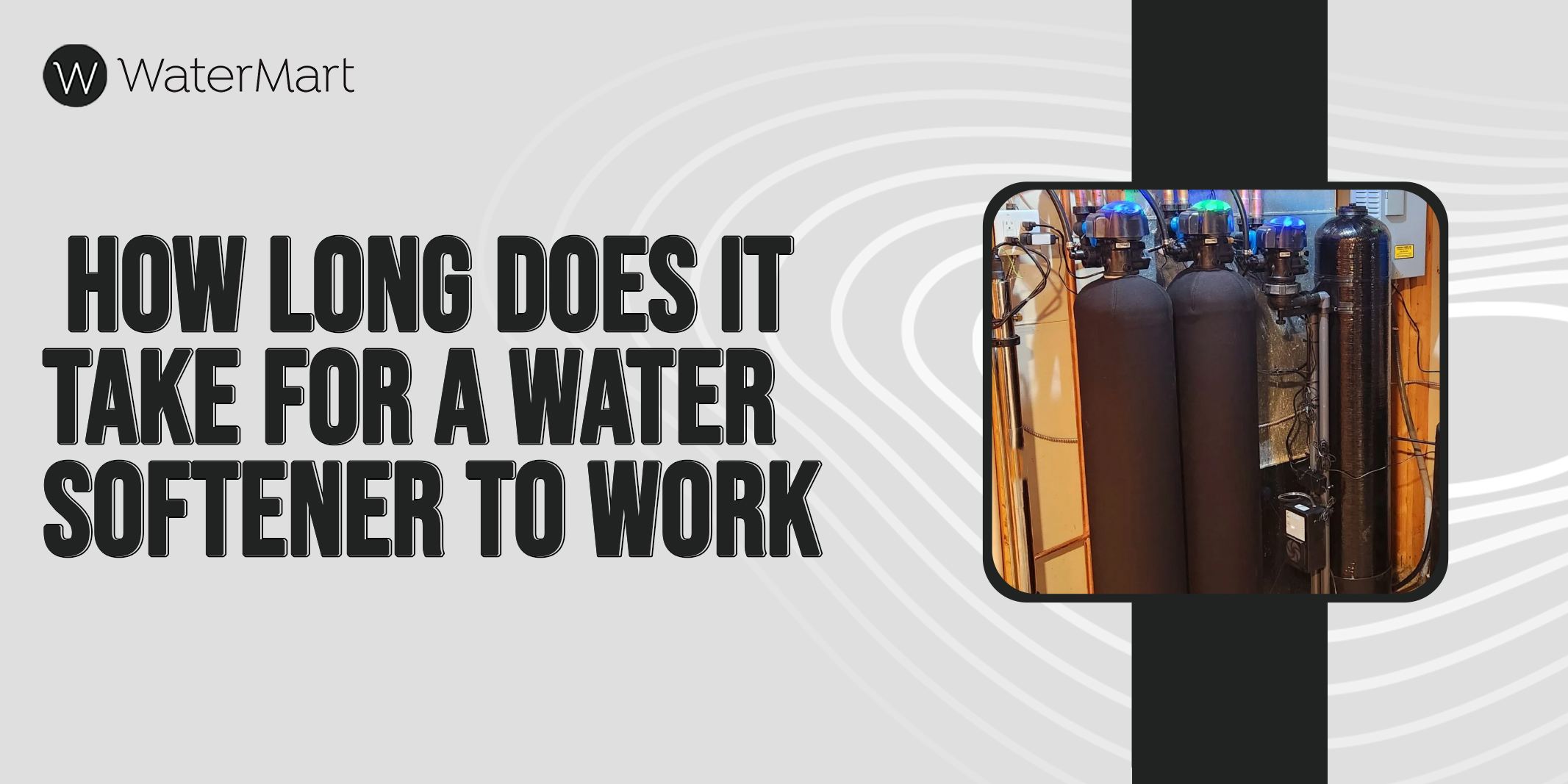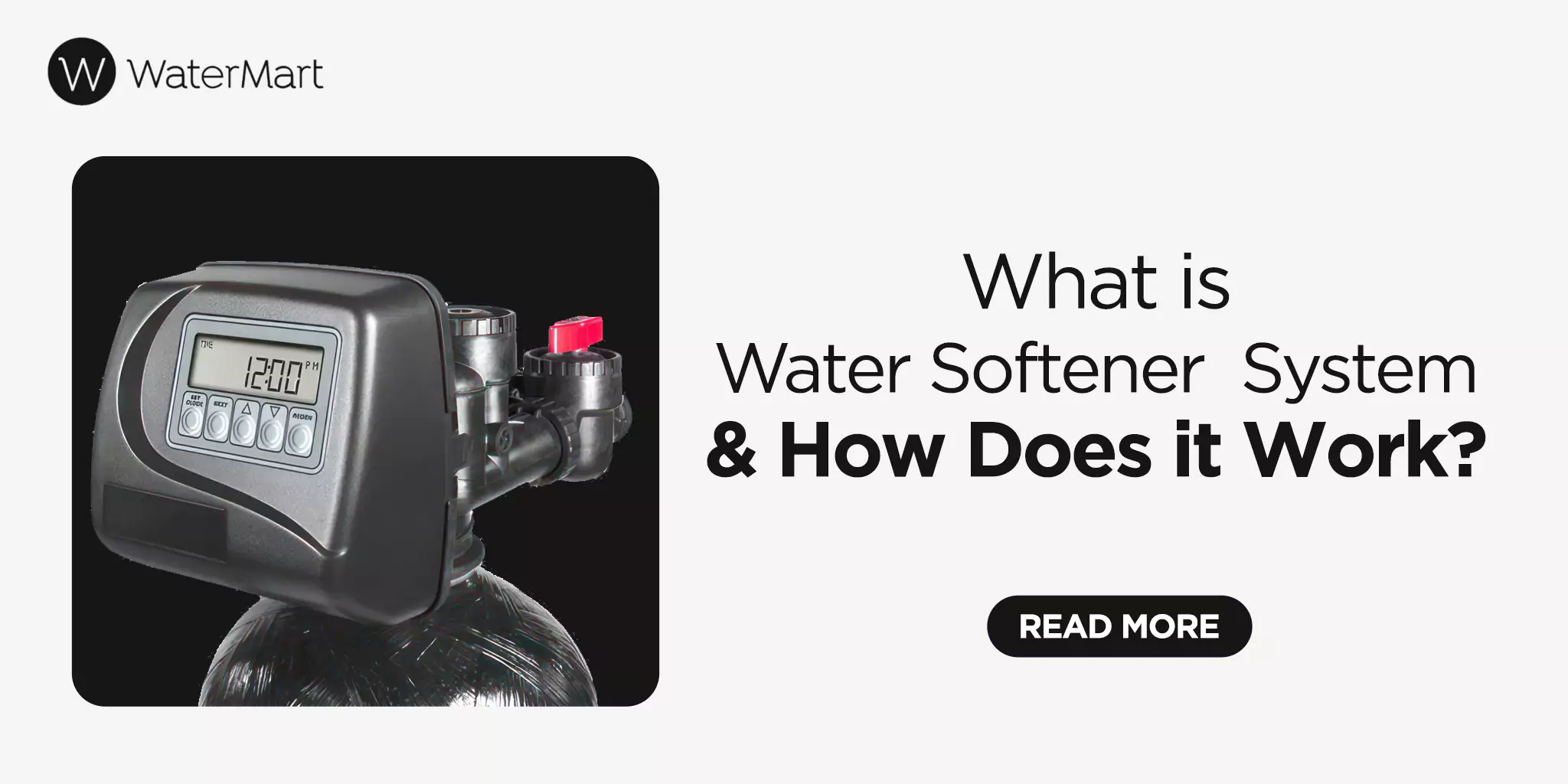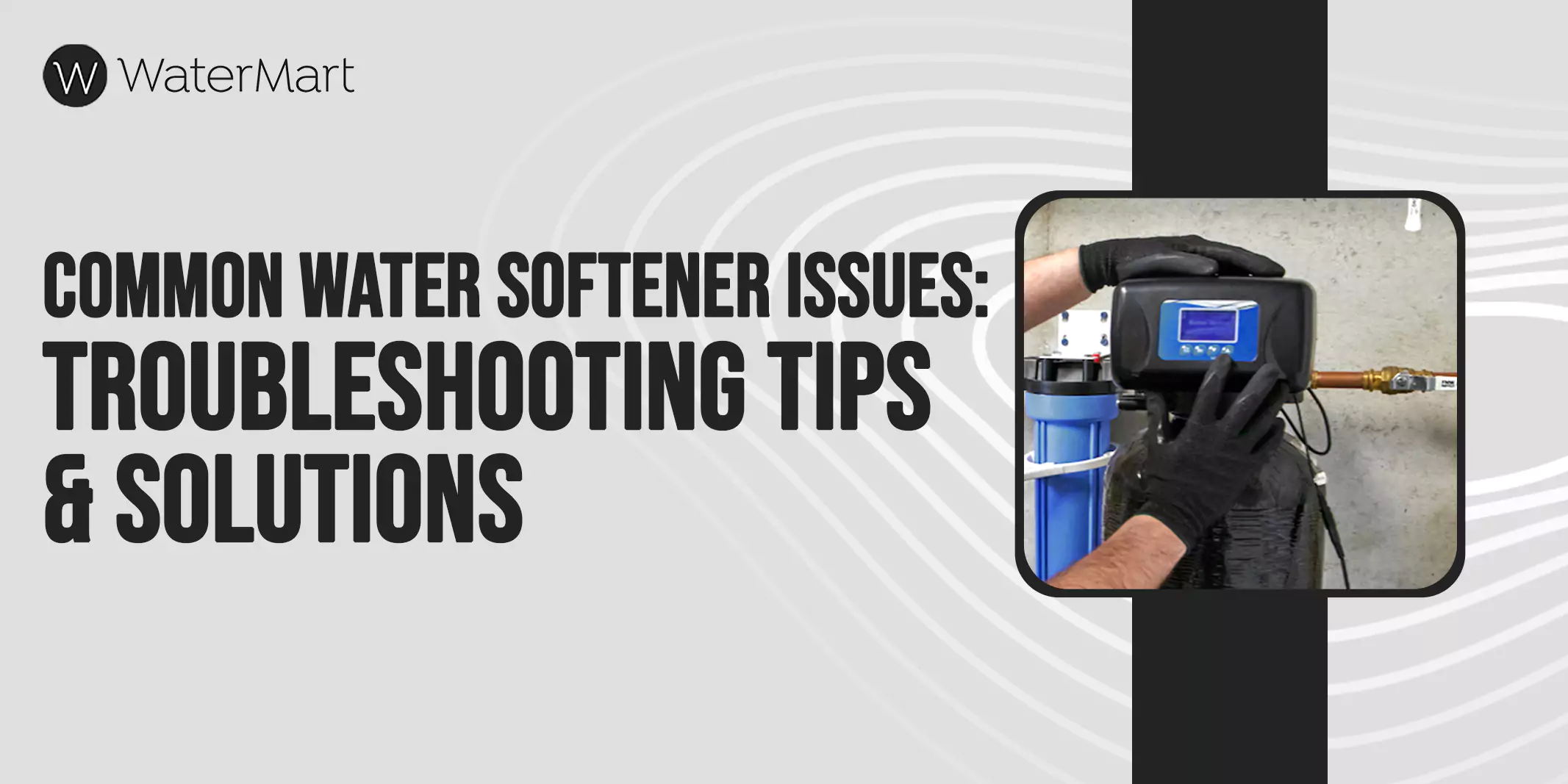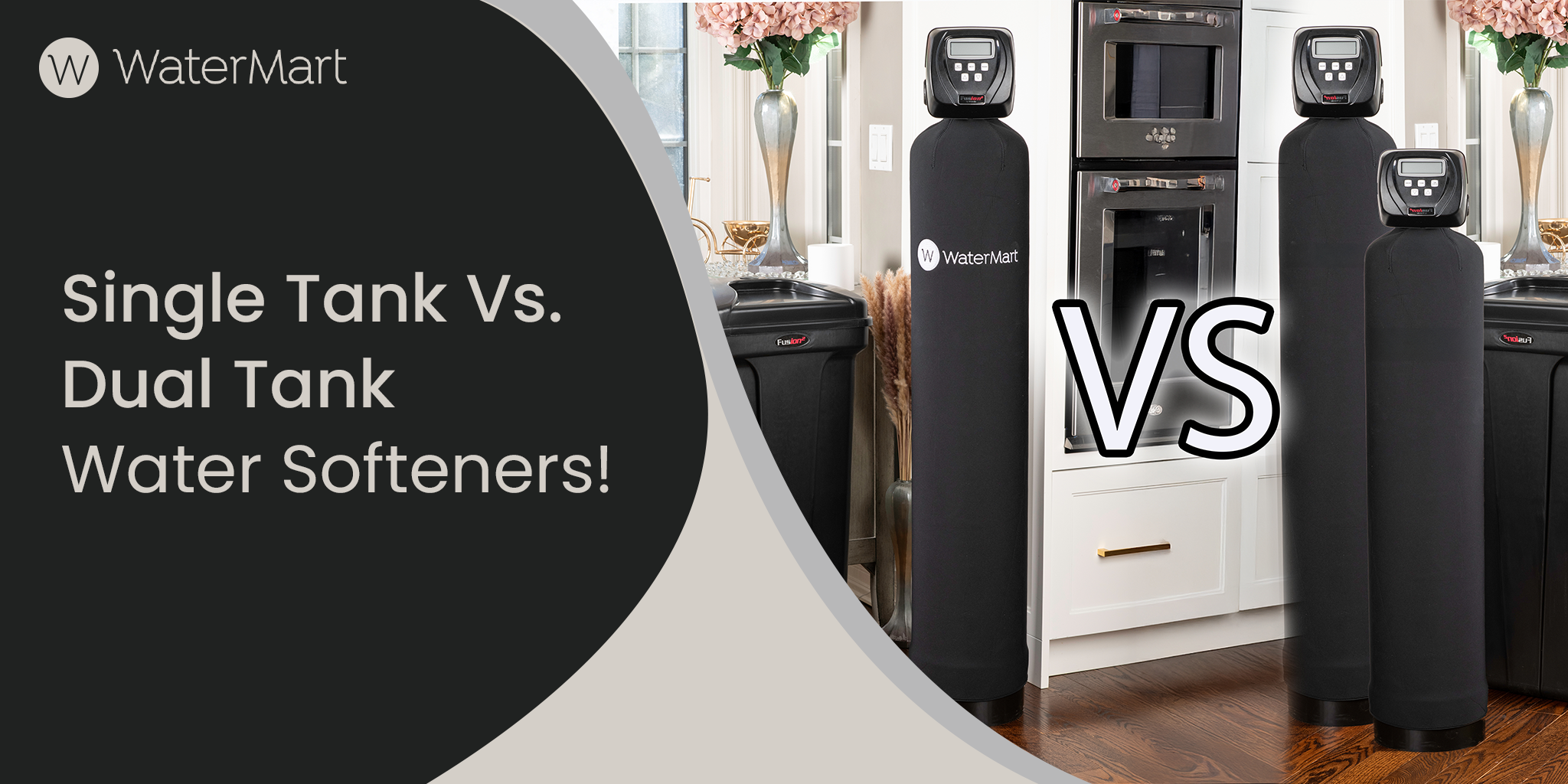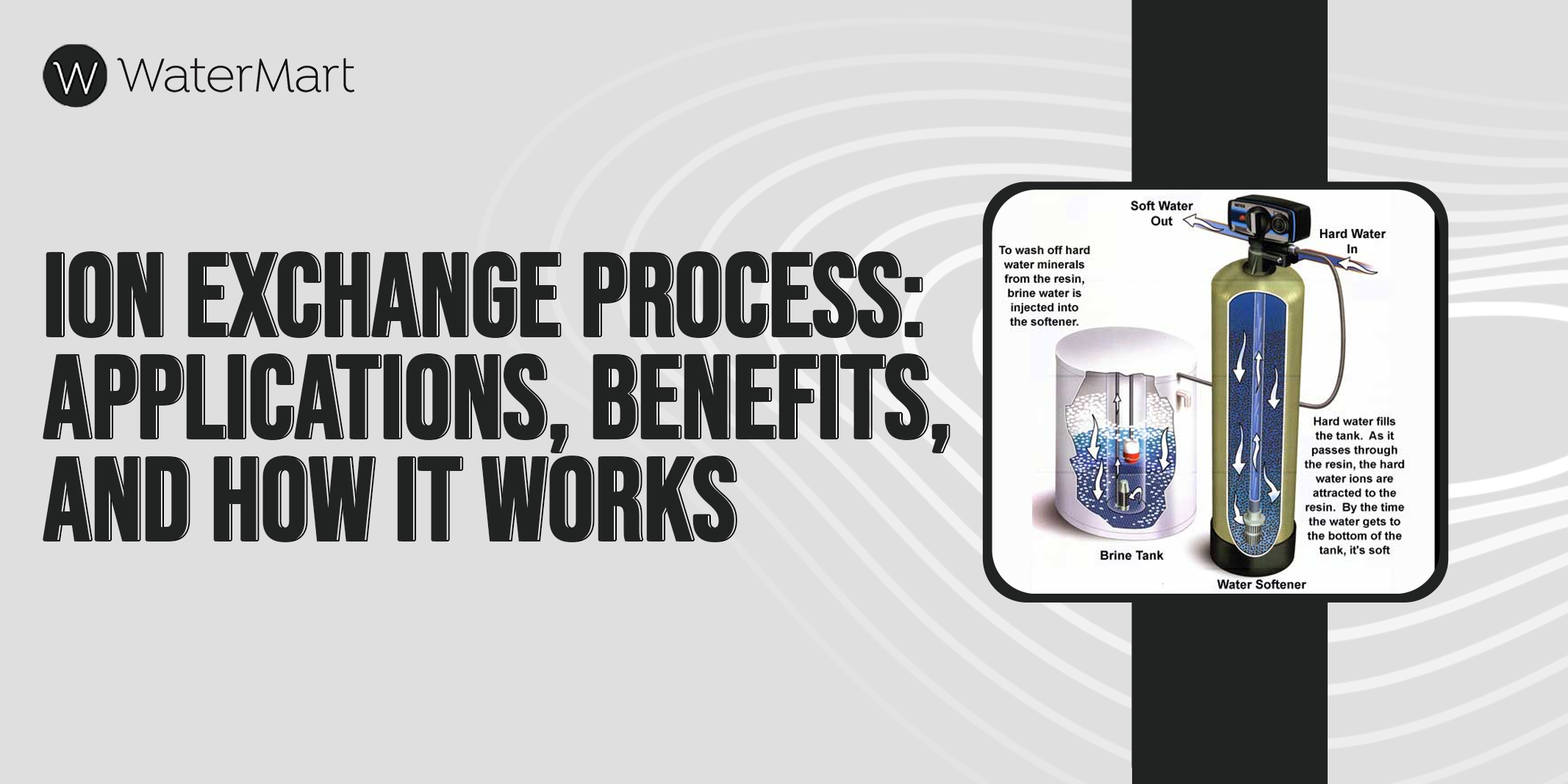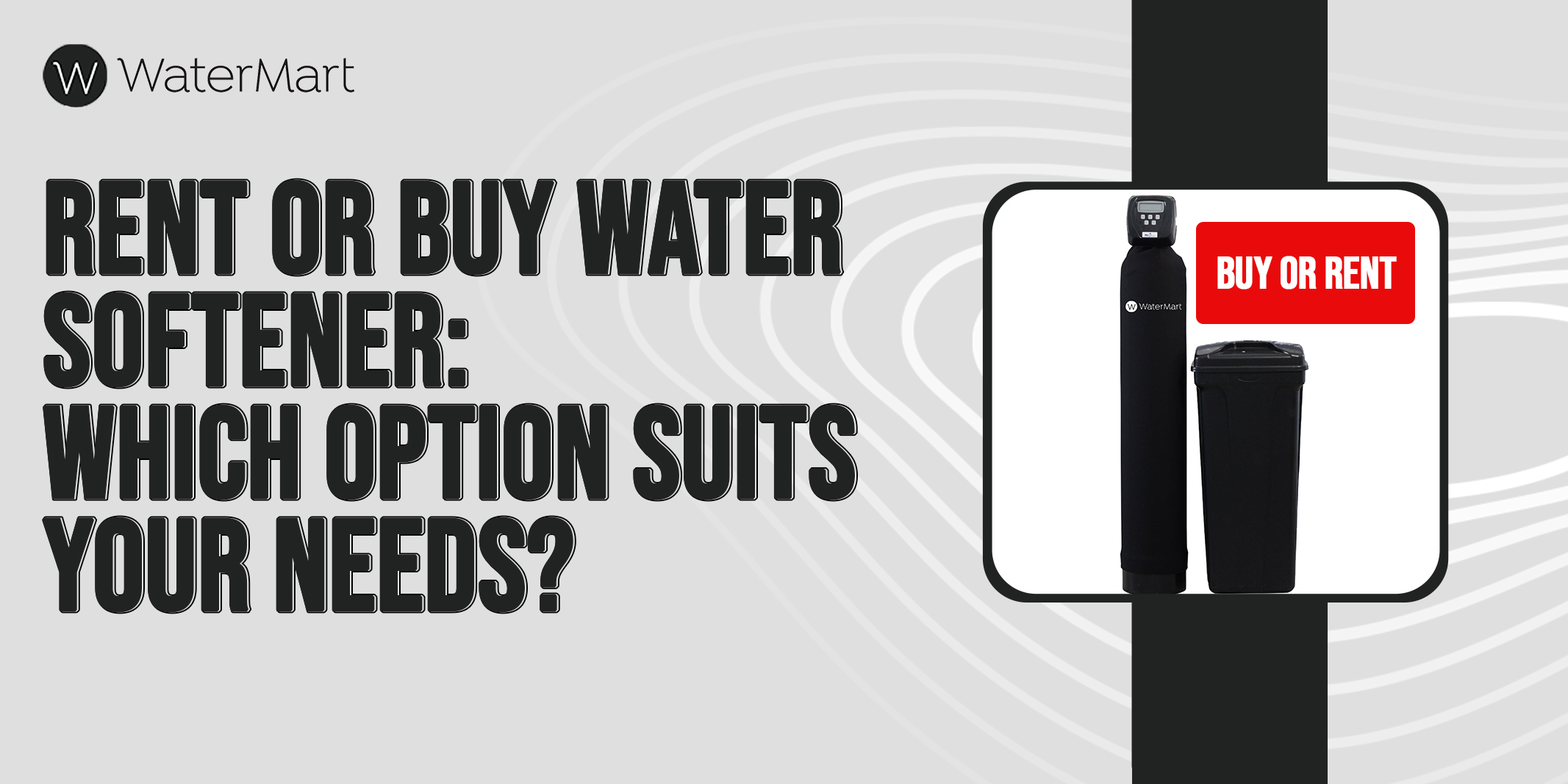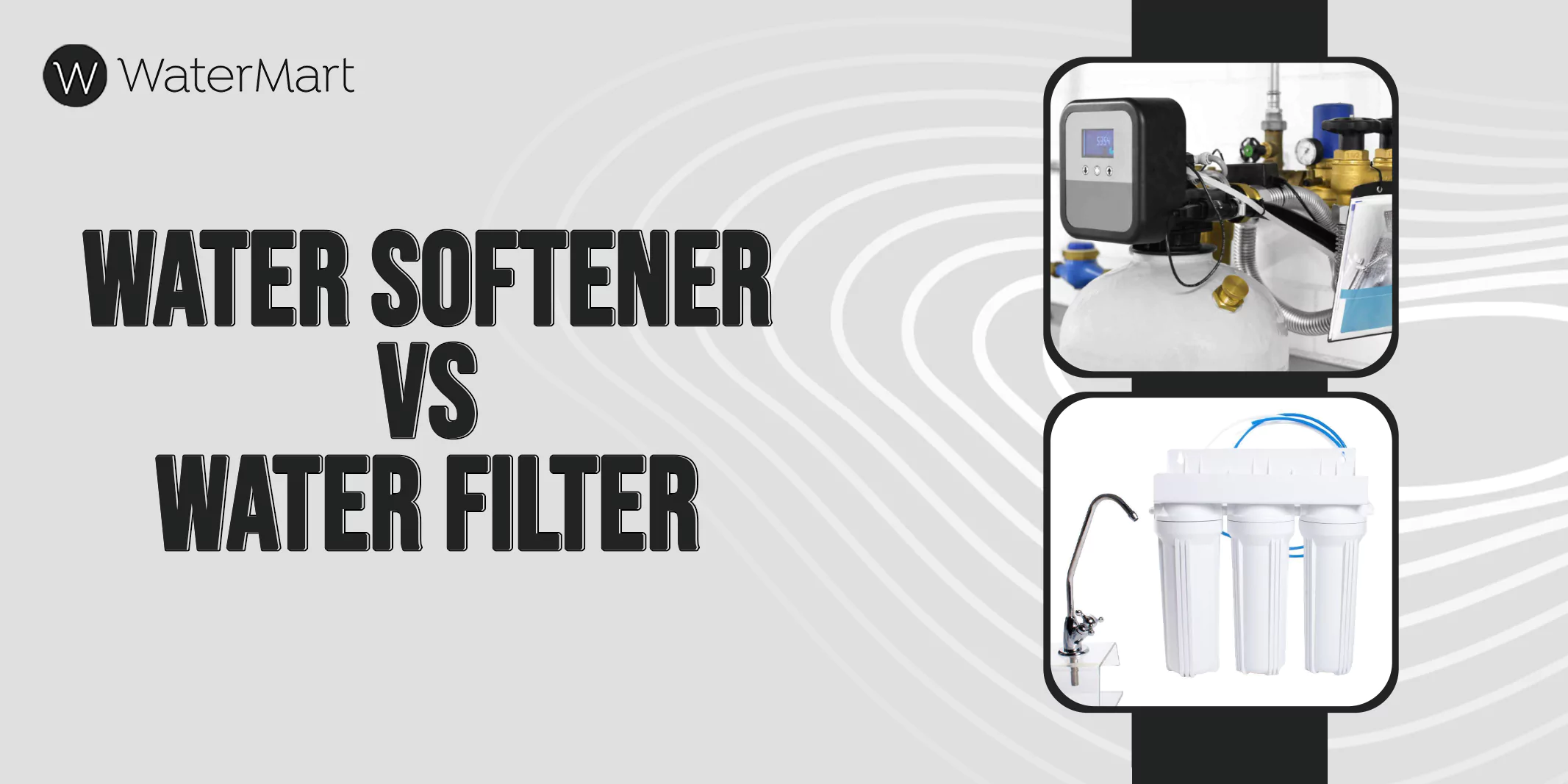Your cart is currently empty!
How Long Does It Take for a Water Softener to Work?
So, you’ve installed your water softener to get rid of hard water woes like dry skin, dull hair, and spotty appliances. Great step!
A water softener can be a game-changer, but how long does it take for a water softener to work? Many homeowners wonder if water softeners work immediately, how long does a regen cycle take, and how to know if a water softener is working.
Fret not—in this article, we’ll discuss the factors that affect water softener performance, common problems and signs of an ineffective water softener, and tips for troubleshooting. We’ll also understand regeneration cycles to identify signs of a malfunctioning system.
So stay with us!
How Long Does it Take for a Water Softener to Work? Does it Work Immediately?
The answer to, “How long does it take to get soft water after installing a water softener” is highly subjective and depends on many factors.
However, in the case of water softeners, you may notice some immediate changes, including slight improvement in the color or taste of water, it’s hard to say that water softeners work immediately. Typically, it may take a few to a couple of weeks to notice the visible difference.
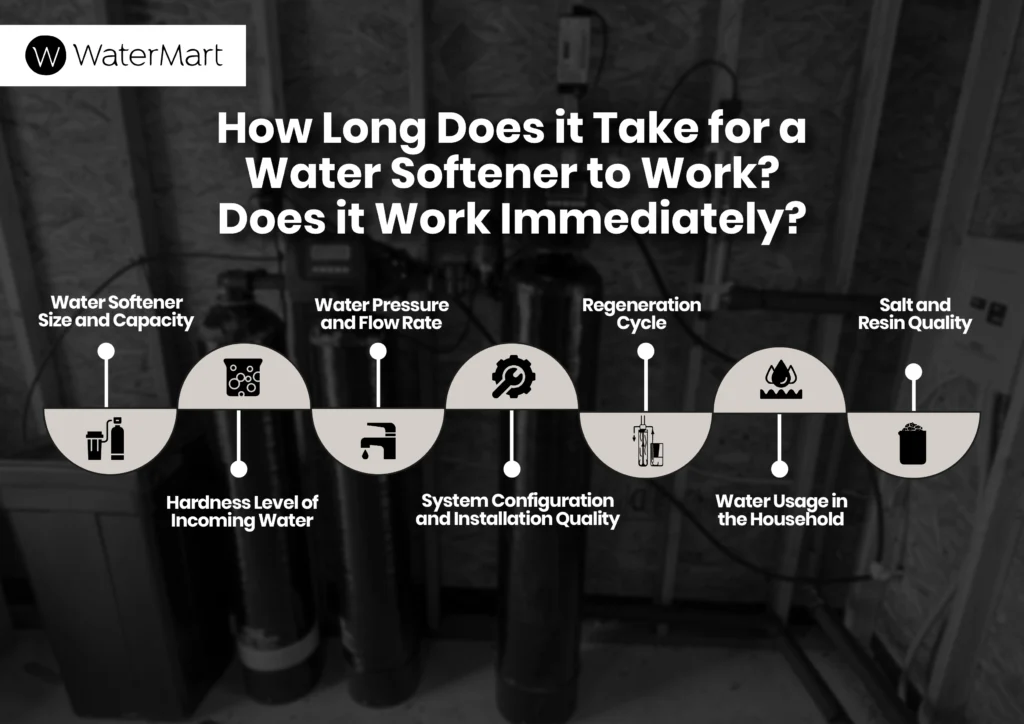
Water Softener Size and Capacity
If you have a large water softener with a higher water capacity, the softener can handle more water usage and soften more water, leading to quicker results.
Hardness Level of Incoming Water
Your water softener may take more time to reduce the mineral content effectively if the hardness levels are high.
Water Pressure and Flow Rate
Water pressure and water flow rates can significantly impact the performance of your water softener. High water pressure and flow rates potentially slow down the softening process.
System Configuration and Installation Quality
Proper installation and configuration of your home water softener play an important role in the overall performance. A poorly installed and configured system may take forever to work efficiently.
Regeneration Cycle
The average duration of the regeneration cycle impacts the softener’s ability to keep up with water demand.
Water Usage in the Household
Household size and water usage are two of the most important factors that influence the working of your water softener. Heavy water usage and large households require frequent regeneration cycles, leading to delayed noticeable results.
Salt and Resin Quality
Salt and resin quality substitutes to optimal performance and longer lifespan of your water softener. Avoid using substandard materials that may delay the performance of your softener.
How Do I Know if My Water-Softening System is Working?
Worried about whether your water softening system is working properly or not? Here are some tell-tale signs you should look for:
- Soft water tastes sweeter and less harsh with no unpleasant odors, especially in your drinking water.
- Soft water usually transforms your hair and skin into smoother and softer. Your skin feels less itchy, and dry and your hair is easy to handle with little to no frizz.
- If your soap produces a rich, foamy lather, understand that your water softener is doing the job right.
- Proper regeneration cycles indicate that the water softener is working efficiently. If the salt levels are high in your brine tank, there’s a problem with the regeneration process.
- You can also visually inspect the system’s behavior by initiating a manual regeneration cycle. If you don’t hear the sound of water flowing through the system, it may indicate a problem.
- A dry or clogged drain line indicates a water softener malfunction. The drain line should always discharge a salty brine solution during the regeneration cycle.
If you’re still unsure of the water quality, schedule our free water testing services to measure the mineral content and assess the performance of your water softener. At WaterMart, we offer FREE water testing services to ensure the best and healthy solution for your specific water needs. You can explore our full range of water treatment solutions tailored for your home.
What Should I Do if My Water Softener Is Not Working for a Long Time After Installation?
If, for some reason, your water softener is not working properly even after a few hours of installation, there could be several issues.
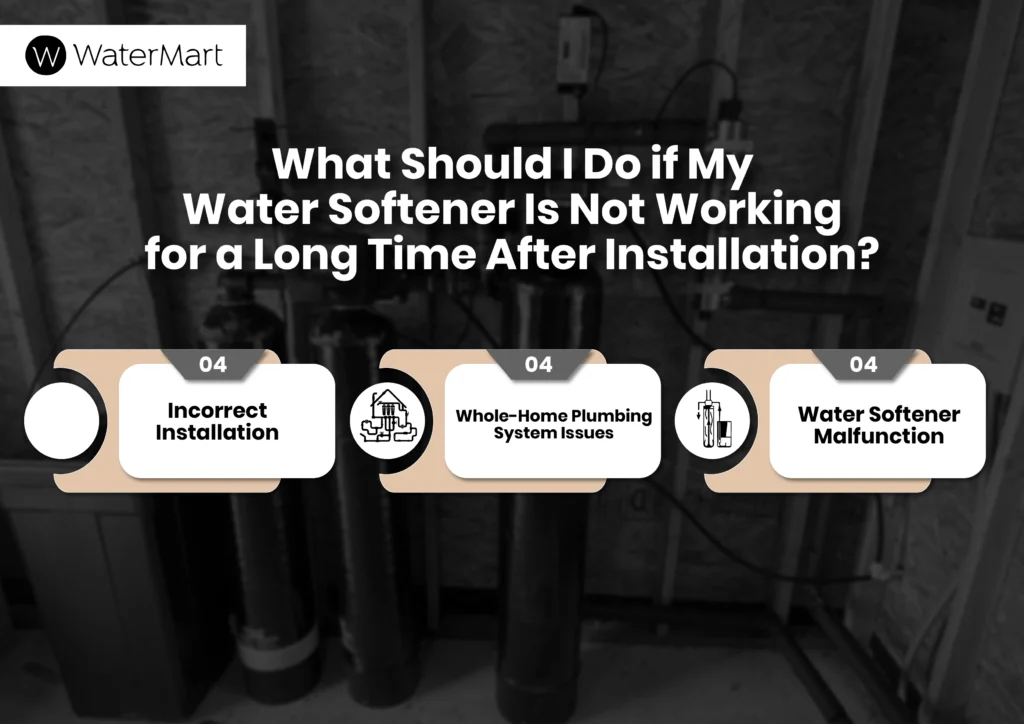
Incorrect Installation
The water softener should be properly plumbed into your home’s water supply system. Misalignment or faulty connections can impact performance, which is why ensuring proper water softener installation is crucial.
Whole-Home Plumbing System Issues
If your house has plumbing issues, including clogged pipes or low water pressure, it might contribute to compromised performance and effectiveness.
Water Softener Malfunction
If the components of your water softener are not working properly, such as a timer, brine tank, or a malfunctioning valve, it can disrupt the system’s operation.
Also, defective resin beads usually hinder the performance of your water-softening system. In such cases, the beads should be replaced for better results.
Here’s how you can troubleshoot the issues if you have minimal plumbing experience:
- Start the regeneration cycle and ensure your brine tank has enough salt
- Clean the drain line and inspect it for any obstructions or clogs
- Make sure the softener receives adequate power
- Use a water hardness test kit to measure the mineral content in your water
If the problem persists, or if you’re unsure about troubleshooting, it’s advisable to consult professional water softener specialists to diagnose the problem and find a viable solution.
WaterMart offers expert softener installation service and repair services to ensure superior performance and longevity of your systems.
Schedule a call with WaterMart today!
Final Thoughts
If you live in Toronto, chances are you have a water softener installed to improve the quality of your home’s water, but how long it takes for a water softener to work depends on many factors, including your household size, water usage, and hardness levels. Therefore, in most cases, the full effects of a water softener may show up after a few days or weeks of installation.
However, there are a few signs that indicate your water softener is working, including improved taste and reduced soap scum. You can also maximize the performance of your system by regular maintenance; checking salt levels, cleaning the brine tank, and using high-quality salt and resin beads for superior performance.
At WaterMart, you can schedule your regular water softener maintenance or request free water testing services to improve the quality of your life today.
Schedule a FREE water consultation now!
FAQs
You should replace salt in your water softener every 1 to 2 months. It’s also recommended to check the salt levels regularly and refill the tank when it’s about one-third full.
The water softener may take a few hours to complete a regeneration cycle and produce soft water after adding salt.
If you have severe scale buildup, it might take some time to dissolve existing mineral deposits. However, you’ll notice a significant difference in scale over several weeks or months.
Typically, water softeners regenerate automatically based on three common triggers:
1. When the predetermined time has been reached regardless of water usage
2. When a specific volume of water has been used
3. When the resin bed’s capacity is nearing exhaustion
